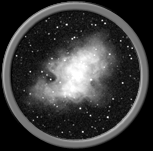 M1
Supernova Remnant in Taurus
Common Names: Crab Nebula
1952
8.4
5h 34.5m
+22° 01'
M1
Supernova Remnant in Taurus
Common Names: Crab Nebula
1952
8.4
5h 34.5m
+22° 01'
The Crab Nebula, M1, was the first nebulous object observed by Charles Messier. It is a cloud of expanding gas left over from a supernova explosion. In the center of this nebula is a 16th magnitude star that is the collapsed core of the supernova. It is a pulsar, perhaps even a rotating neutron star. M1 can be seen easily with a pair of binoculars. A telescope will bring out more of the nebula's fine details.
Image credit: Two Micron All Sky Survey (2MASS)
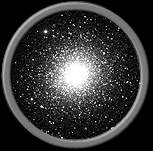 M2
Globular Cluster in Aquarius
Common Names: None
7089
6.5
21h 33.5m
-0° 49'
M2
Globular Cluster in Aquarius
Common Names: None
7089
6.5
21h 33.5m
-0° 49'
M2 is a globular cluster of stars located in the constellation of Aquarius. This cluster is located about 50,000 light-years from Earth. It is believed to be about 175 light-years in diameter. M2 is one of the brightest and largest globular clusters in the sky. This cluster's visual magnitude of 6.5 means it can easily be found with a pair of binoculars. A telescope will be required to resolve the cluster's individual stars.
Image Credit: Doug Williams, REU Program/NOAO/AURA/NSF
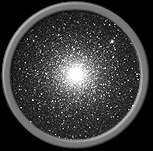 M3
Globular Cluster Canes Venatici
Common Names: None
5272
6.2
13h 42.2m
+28° 23'
M3
Globular Cluster Canes Venatici
Common Names: None
5272
6.2
13h 42.2m
+28° 23'
Located in the constellation Canes Venatici, M3 is a tight cluster of almost 500,000 stars. This cluster is located approximately 30,000 light-years from Earth. It contains about 170 faint variable stars, which is more than any other globular cluster. A visual magnitude of 6.2 makes this bright cluster an easy target for binoculars and telescopes alike.
Image credit: N.A.Sharp, Vanessa Harvey/REU program/NOAO/AURA/NSF
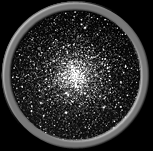 M4
Globular Cluster in Scorpius
Common Names: None
6121
5.6
16h 23.6m
-26° 32'
M4
Globular Cluster in Scorpius
Common Names: None
6121
5.6
16h 23.6m
-26° 32'
M4 is a globular cluster that lies in the constellation of Scorpius. It is located about 7,000 light-years from the Earth. This makes M4 one of the closest of the globular clusters. It is also one of the most open, or loose globular clusters. M4 is receding from us at a rate of 65 km/sec. With a visual magnitude of 5.6, this cluster can easily be seen with the naked eye on a dark, clear night. With the aid of a small telescope, it displays a central band of bright stars in a linear formation.
Image credit: NOAO/AURA/NSF
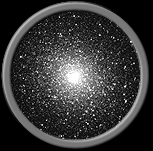 M5
Globular Cluster in Serpens
Common Names: None
5904
5.6
15h 18.6m
-32° 13'
M5
Globular Cluster in Serpens
Common Names: None
5904
5.6
15h 18.6m
-32° 13'
Located in the constellation Serpens, globular cluster M5 is one of the few to show an elliptical shape. It is believed to be one of the oldest of the globular clusters, at an age of about 13 billion years. M5 is located about 23,000 light-years from Earth, and has a diameter of about 130 light-years. This cluster's visual magnitude of 5.6 males it easy to spot on a clear night with dark skies and a pair of binoculars. A telescope will resolve the cluster's individual stars.
Image credit: Hillary Mathis, REU Program/NOAO/AURA/NSF
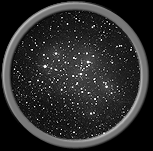 M6
Galactic Cluster in Scorpius
Common Names: Butterfly Cluster
6405
5.3
17h 40.1m
+2° 05'
M6
Galactic Cluster in Scorpius
Common Names: Butterfly Cluster
6405
5.3
17h 40.1m
+2° 05'
M6 is a galactic, or open cluster of stars found in the constellation of Scorpius. It has a diameter of about 20 light-years and lies about 2,000 light-years from Earth. This cluster is composed mainly of blue and white stars with the brightest being a yellow or orange giant. The shape of this cluster somewhat resembles that of a butterfly, giving rise to its more common name, the butterfly cluster. At magnitude 5.3 it is an easy find with binoculars.
Image credit: N.A.Sharp, Mark Hanna, REU program/NOAO/AURA/NSF
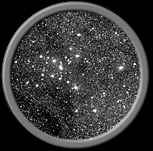 M7
Galactic Cluster in Scorpius
Common Names: Ptolemy's Cluster
6475
4.1
17h 53.9m
-34° 49'
M7
Galactic Cluster in Scorpius
Common Names: Ptolemy's Cluster
6475
4.1
17h 53.9m
-34° 49'
Another galactic cluster to be found in the rich hunting grounds of the constellation of Scorpius is M7, also known as Ptolemy's cluster. It is a large group of about 80 stars set against the background of fainter and more distant Milky Way stars. M7 is about 18 light-years in diameter and lies about 800 light-years from us. The brightest star of the cluster is a yellow giant with a magnitude of 5.6. This bright cluster makes a sine target for the binocular observer.
Image credit: N.A.Sharp, REU program/NOAO/AURA/NSF
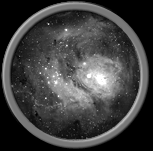 M8
Diffuse Nebula in Sagittarius
Common Names: Lagoon Nebula
6523
6.0
18h 03.8m
-24° 23'
M8
Diffuse Nebula in Sagittarius
Common Names: Lagoon Nebula
6523
6.0
18h 03.8m
-24° 23'
Known more commonly as the Lagoon Nebula, M8 is a beautiful cloud of gas illuminated by a 5.9 magnitude star inside. The nebula is about 150 light-years in diameter and lies about 5,200 light-years from Earth. M8 is a stellar nursery where many new stars are being formed from the great clouds of gas. With a visual magnitude of 6, this nebula can be easily seen in the constellation of Sagittarius with the naked eye on a dark, clear night. A telescope will reveal some of the more complex patterns of bright and dark areas within the nebula.
Image credit: NOAO/AURA/NSF
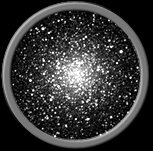 M9
Globular Cluster in Ophiuchus
Common Names: None
6333
7.7
17h 19.2m
-18° 31'
M9
Globular Cluster in Ophiuchus
Common Names: None
6333
7.7
17h 19.2m
-18° 31'
M9 is a globular cluster of stars located within the constellation of Ophiuchus. It is located at the edge of a dark patch of dark nebulosity. This cluster is about 26,000 light-years from us and has a diameter of about 70 light-years. The central region of the cluster has a distinct oval shape. M9's visual magnitude of 7.7 makes it a bit more challenging to find than some of the other globular clusters. It can be found with binoculars, and can be quite impressive in a 4-inch telescope.
Image credit: NOAO/AURA/NSF
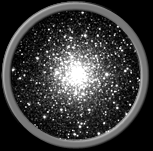 M10
Globular Cluster in Ophiuchus
Common Names: None
6254
6.6
16h 57.1m
-4° 06'
M10
Globular Cluster in Ophiuchus
Common Names: None
6254
6.6
16h 57.1m
-4° 06'
Globular cluster M10 lies in the constellation of Ophiuchus. This is a very bright cluster with a central region that appears slightly pear-shaped. It is about 70 light-years in diameter and lies about 16,000 light-years from Earth. With a visual magnitude of 6.6 and an apparent diameter of 15 arc minutes, this is one of the best clusters to be viewed with both binoculars and small telescopes.
Image credit: Two Micron All Sky Survey (2MASS)

 M1
Supernova Remnant in Taurus
M1
Supernova Remnant in Taurus M2
Globular Cluster in Aquarius
M2
Globular Cluster in Aquarius M3
Globular Cluster Canes Venatici
M3
Globular Cluster Canes Venatici M4
Globular Cluster in Scorpius
M4
Globular Cluster in Scorpius M5
Globular Cluster in Serpens
M5
Globular Cluster in Serpens M6
Galactic Cluster in Scorpius
M6
Galactic Cluster in Scorpius M7
Galactic Cluster in Scorpius
M7
Galactic Cluster in Scorpius M8
Diffuse Nebula in Sagittarius
M8
Diffuse Nebula in Sagittarius M9
Globular Cluster in Ophiuchus
M9
Globular Cluster in Ophiuchus M10
Globular Cluster in Ophiuchus
M10
Globular Cluster in Ophiuchus